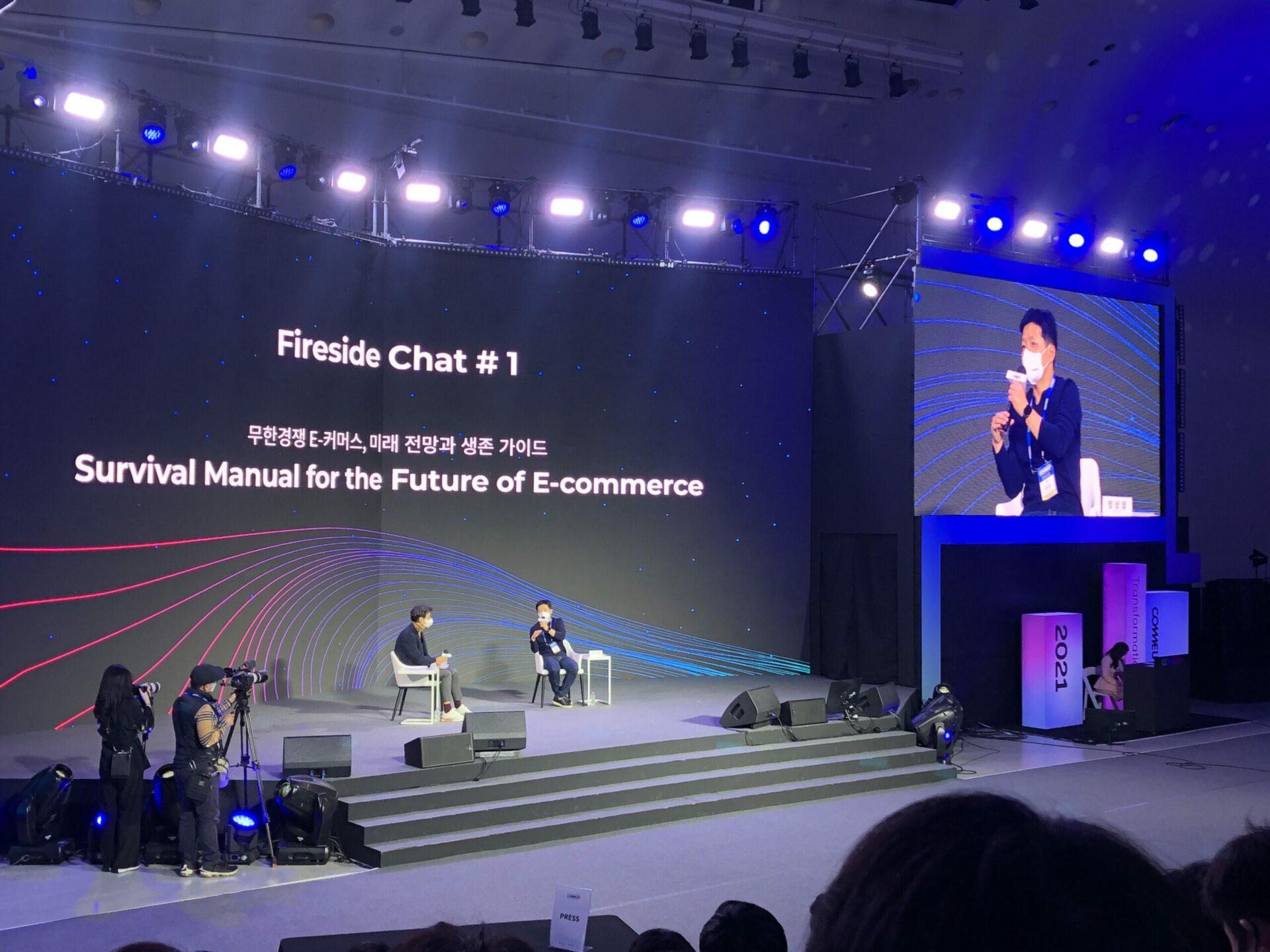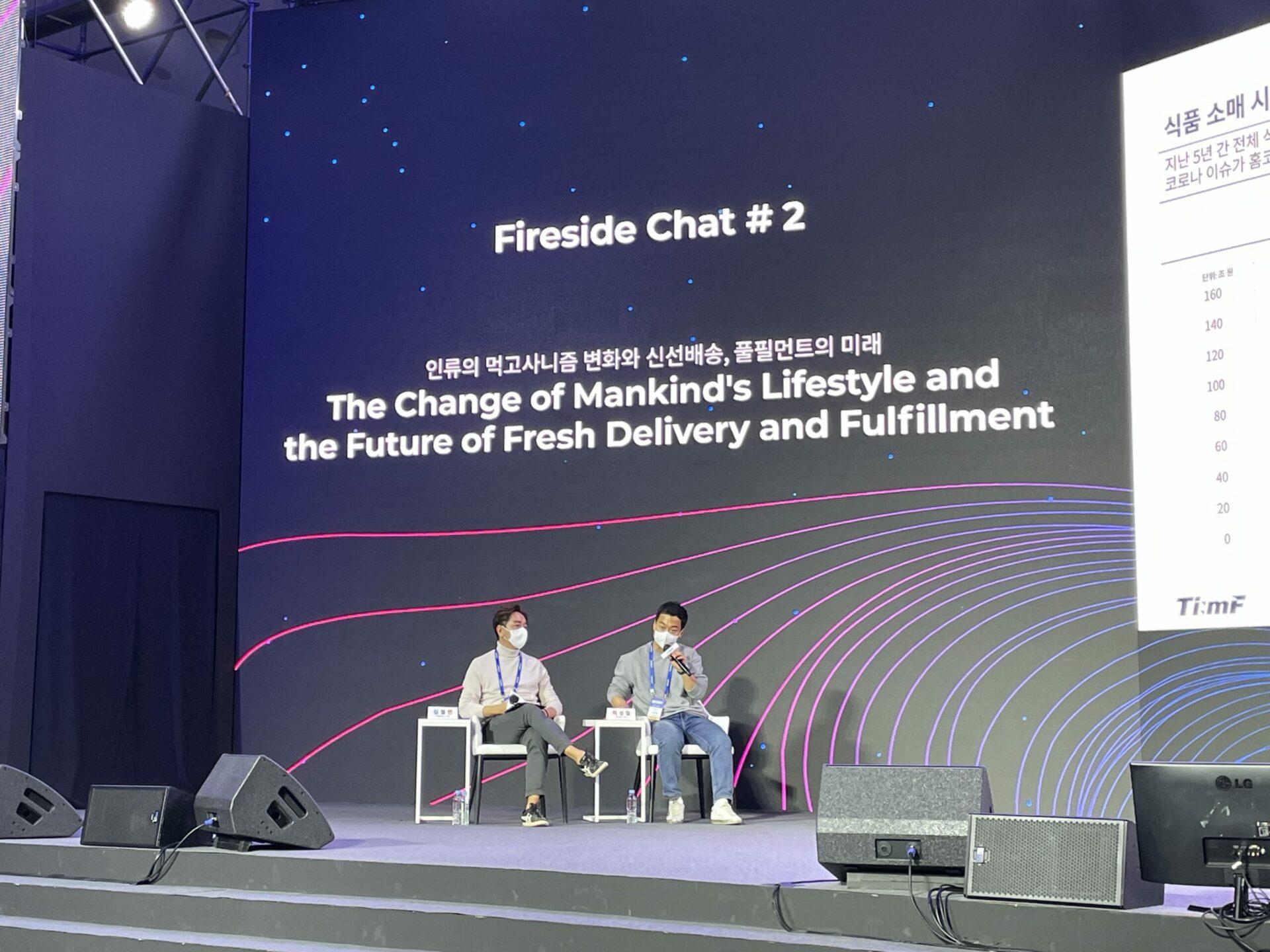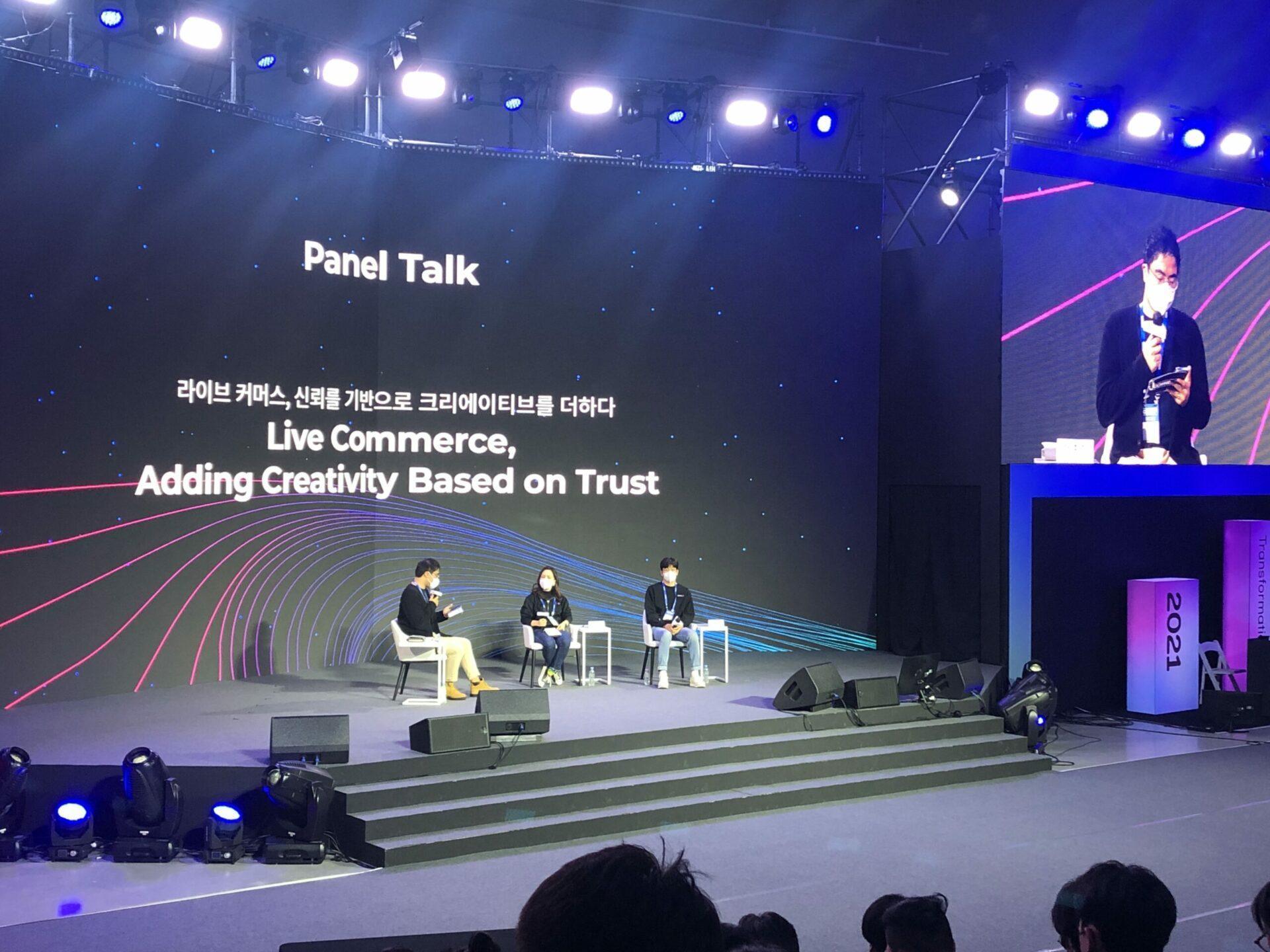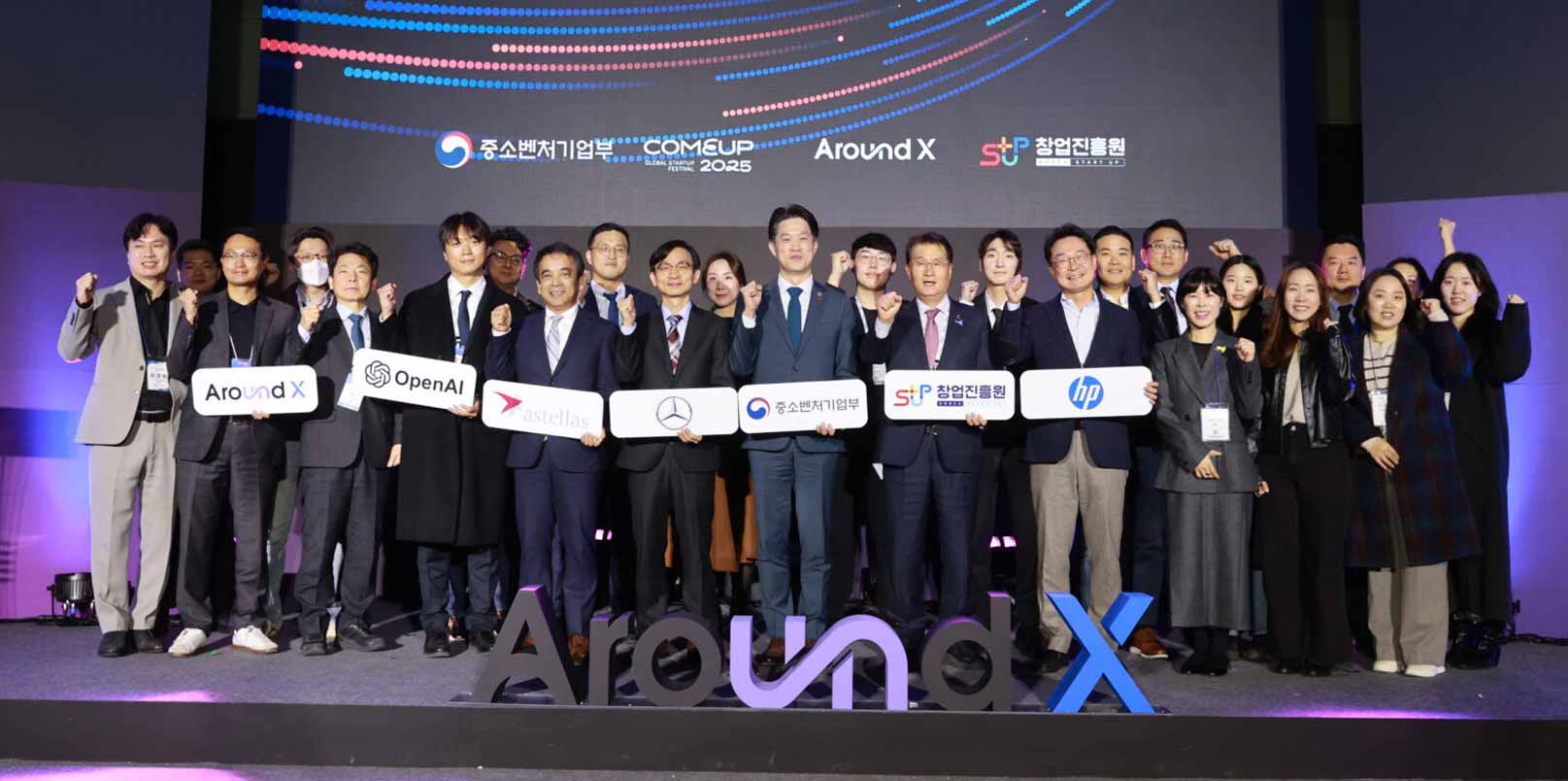The final day of COMEUP 2021 saw plenty of thoughtful panel discussion, fireside chats, and presentations from large conglomerates, unicorns, and startups. The event lived up to its theme of Meeting the future by discussing the current and future trends of e-commerce and fresh food delivery systems. KTD covered the event and presents this industry analysis as per the speakers’ perspectives.
Survival Manual for the Future of E-Commerce

Sean Jung, the Senior Director at Coupang, and Jonghoon Lee, CIO of Lotte Ventures, started the first fireside chat of the day. The talk focused on logistics and how offline and online firms approach quick commerce. Jung started the session by acknowledging the sustained growth in e-commerce over the last decade. However, people question if it is stagnant growth, whether they see some drop in these profits and if there could be a balance between online and offline equilibrium. If so, where is it, and how far are we from it? In 2019 & 2020 globally, the e-commerce market was the fifth largest around the world. “Korea’s market is big, but we still have growth potential going forward,” says the Coupang Sr director. Jung believes next year is Coupang’s boom period which will make them the third-largest e-commerce firm in the world.
The Change of Mankind’s Lifestyle and the Future of Fresh Delivery and Fulfilment

The fireside chat was conducted between Seongil Lee, CEO of Teamfresh, and Kevin Kim, who acted as the moderator. Kevin Kim began by sharing the sentiment that culture is changing and there is a role for fresh delivery and fulfillment. The history of humanity goes in line with the trend of logistics. The open markets and e-commerce that serve B2B and B2C customers are growing fast. In the past, buying food online was something that people were quite reluctant to do. The main issue behind this was that there was not enough culture and infrastructure. Food also went terrible, and people were unwilling to order food online, especially for food. According to Kevin Kim, the vital thing is enhancing the retailers’ logistics capacity and securing cold-chain accommodation for those retailers. “It is more important to target the appropriate temperature for certain products and maintain it. This is the essence of cold chain delivery,” says Seongil Lee.
Living Commerce Adding Creativity Based on Trust

The speakers in the panel talk were Yong Kim, CPO of Woowa Bros., Hanna Kim, CEO of Grip Company, and Junhan Ahn, CEO of Adoba. Mr. Ahn acted as the moderator of the panel talk. He started by saying that live commerce is growing after Covid-19, and in South Korea, there are two companies at the center of it. Initiated by China, the live commerce industry in all countries is snowballing. According to Yong Kim, in South Korea, the live commerce market has enormous potential, and this is why it has many players. However, regulation of live commerce is an issue. If they are regulated with the same standards, the live commerce market with has difficulty growing. “We want people to believe that the products are guaranteed to a certain level of quality. If not, they wouldn’t come to our platform to buy these things,” says Hanna Kim.






